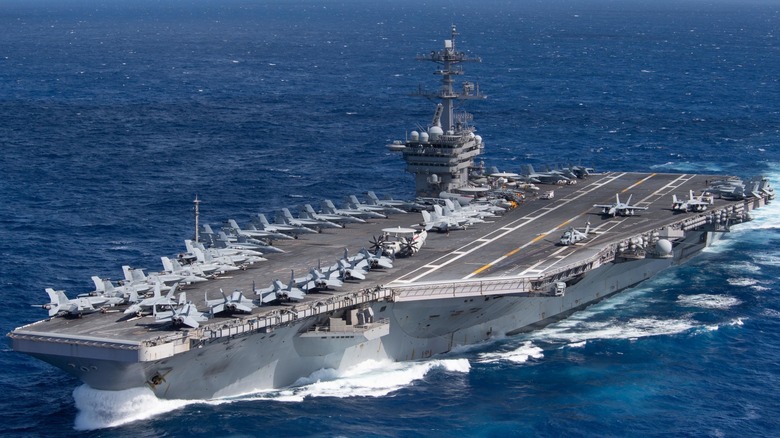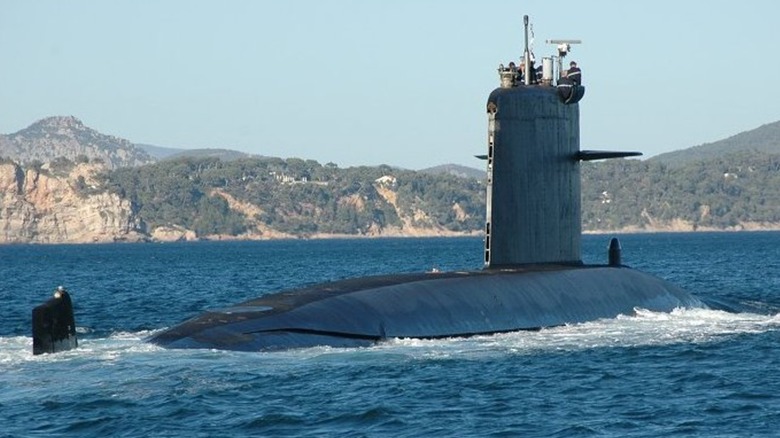A Tiny Sub 'Sank' A $4.5B American Aircraft Carrier, And Here's Why It Mattered To The US Navy
Military exercises allow commanders to test their personnel and equipment under wartime conditions. Because it's all done safely without the use of live ammunition, save for some rare events, military units can practice everything from conducting amphibious assaults to reacting to nuclear weapons. The U.S. Navy's exercises can involve a wide range of participants, including allied nations such as France. NATO conducts these kinds of exercises throughout the year, and in 2015, something unexpected happened.
During a joint training exercise involving the U.S. Carrier Strike Group 12, which was centered around the USS Theodore Roosevelt (CVN-71), a small French nuclear submarine, the Saphir, engaged on the final day. In doing so, the outdated French first-generation nuclear submarine "sank" the Roosevelt. The Saphir began the exercise as part of the friendly forces, helping hunt for enemy subs alongside U.S. aircraft. In the second phase of the exercise, the Saphir joined the opposing forces.
In that phase, the Saphir was tasked with finding the aircraft carrier and its warships and preparing for an attack. The exercise was designed to test the various crews' reactions to threats, and it ended with the "sinking" of the Roosevelt. It wasn't merely surprising that the small boat took out a larger one; it was shocking because nobody thought it was possible. In the end, the exercise found a weakness in the strike group's "armor," helping the Navy identify and reshape tactics to prevent something like that from happening in real life.
The sinking likely helped improve the U.S. Navy's future tactics
When the exercise was conducted off the coast of Florida, it wasn't the United States Navy that proudly proclaimed what happened. Instead, it was the French Ministry of Defense that published a report detailing how one of its Rubis-class nuclear submarines killed the U.S.' mighty aircraft carrier. During phase two of the exercise, the Saphir managed to locate the USS Theodore Roosevelt while evading detection, which set it up for success.
The Saphir somehow slipped past every anti-submarine warfare (ASW) measure the Americans deployed, including all other vessels in CSG 12. On the morning of the last day of the exercise, the commander gave the order to fire, and the Saphir "sank" its target. Of course, the Saphir didn't literally arm one of its F17 Mod 2 torpedoes or SM39 Exocet anti-ship missiles and actually strike the carrier. These kinds of things are typically handled by software, and the Saphir successfully registered a kill, though the details of the exercise and the systems used are not publicly available.
It seemed all but impossible that a sub could make its way through the layered defenses of the CSG and strike the carrier. Still, that's what happened. The exercise identified a serious shortcoming in an aircraft carrier's defense, and it's more than likely that the U.S. Navy modified its training and tactics to compensate. After all, that's the main reason these kinds of exercises are conducted: to identify shortfalls and overcome them so they don't surprise commanders during actual combat.

